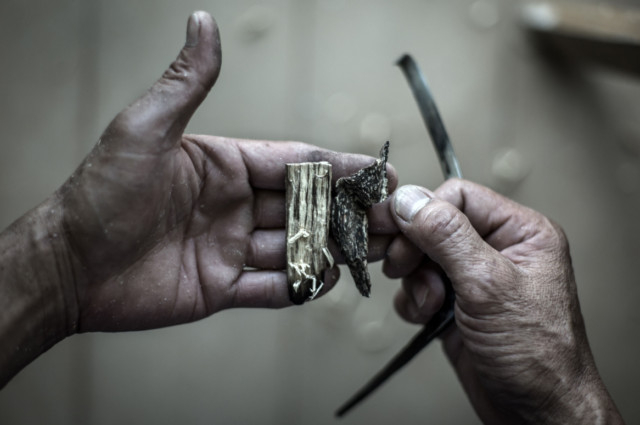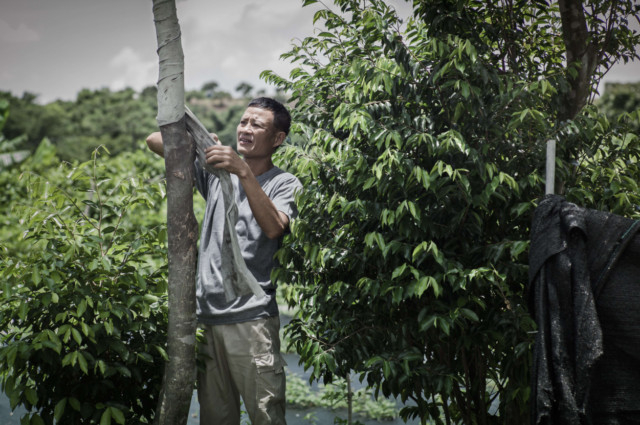
Hong Kong: He may not be able to resuscitate Hong Kong’s long-dead incense trade but entrepreneur Chan Koon-wing is at least hoping to save the tree that gave the city its name centuries ago.
Chan returned to the southern Chinese city from his adopted home in Northern Ireland four years ago to revive his late grandfather’s incense-tree plantation in the northern village of Shing Ping, near the border with the mainland.
“If I don’t start growing incense trees again, I fear we’ll lose the species because of exploitation by illegal loggers,” Chan said, standing on the edge of his vast and and faintly aromatic plantation.
Southern China’s native incense trees once provided the raw material for joss sticks that were exported from Hong Kong — the city’s name means “fragrant harbour” — to ports as far afield as the Arabian peninsula.
Local experts say Hong Kong’s incense trade thrived for hundreds of years, especially in the Song Dynasty around the turn of the first millennium, and in the later Ming Dynasty (1368-1644).
But as the island in the Pearl River Delta transformed itself into a powerhouse of business and finance in the 1980s, the trees that were once a pillar of the local economy were replaced by offices and apartment blocks.
Chan’s grandfather’s farm is now the only plantation left in the city.
Chan’s farm produces a local species called aquilaria sinensis, the native Chinese member of the family commonly known as agarwood which is found throughout Asia.
Its most valuable incense and fragrant oils are produced by wounding the trunk and exposing the wood to fungal infection, which the tree fights by producing a dark resin. Burning wood steeped in this resin produces the aroma.
Ancient Asian texts abound in references to the religious and cultural uses of agarwood, including the oldest Sanskrit literature of Hinduism dating back thousands of years.
Known in China as chen xiang, the sap is prized in traditional Chinese medicine as a treatment for illnesses ranging from asthma to cancer.
The highest quality resin can fetch more than HK$10,000, or Dh5,200, a gram, leading to the indiscriminate felling of wild trees by poachers.
“Some people said incense trees are more expensive than gold because of their medicinal properties,” Conservancy Association senior campaign manager Peter Li said.
The species is listed alongside Great White sharks and American black bears under the Convention on International Trade in Endangered Species of Wild Fauna and Flora (CITES), meaning its trade should be restricted.
Conservationists say that Hong Kong has a better record of protecting its incense trees than mainland China, where habitat destruction and illegal logging have taken a greater toll.
“There has been an increase in the number of reports of damage on mature incense trees,” Hong Kong’s agriculture, fisheries and conservation department said.
The department has found the species in 86 out of 118 sites surveyed around Hong Kong since 2003, but there are no figures showing at what rate the trees’ numbers are declining.
Some of the surviving trees bear signs of wounding, where poachers have slashed the trunks to induce resin production.
“Owing to the high price of ‘chen xiang’ in the market, illegal harvesting of incense trees was detected in southern China including Hong Kong” the department said.
Chan said he hoped more farmers would join him in reviving Hong Kong’s legal incense production.
“I hope to see more people planting the incense trees so Hong Kong can restore its reputation as a fragrant harbour,” he said.














